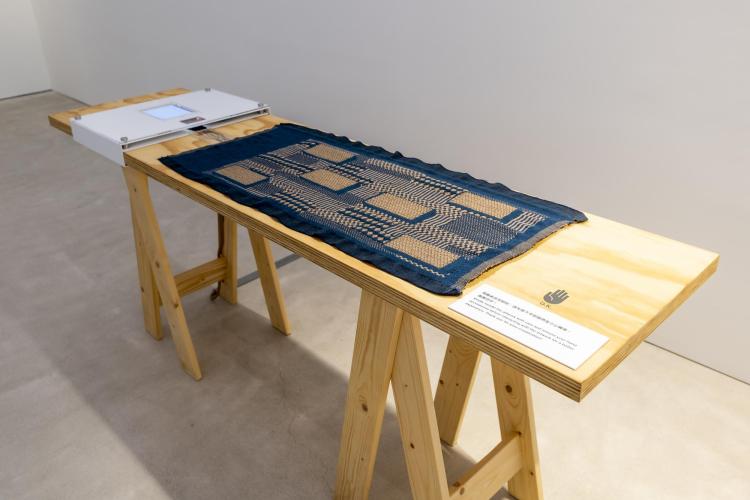Laura Devendorf’s memory fabric innovations exhibited at Hong Kong museum

There’s a long history of using textiles in the form of tapestries to document history, so in a way, Laura Devendorf’s use of resistive yarns and other embedded technologies to record her memoir is a natural continuation of this tradition. Then again, there is much about her memory fabric innovations, “Wear” and “A Fabric that Remembers,” that are entirely unique.
The two projects are both being exhibited at The Centre for Heritage, Arts and Textile (CHAT) in Hong Kong as part of the Interweaving Poetic Code exhibition, which began May 1 and runs through July 18. The exhibition explores code, textiles and their “poetic connections” through participatory installations, an international discussion forum, workshops and performances.
Devendorf, an assistant professor of information science with the ATLAS Institute and director of the Unstable Design Lab, has long been fascinated with the idea that fabrics could measure and capture the forces on a person’s body, leading to her development of techniques for resistive force-sensing in fabrics.
Unlike tapestries and similar to its title, “Wear” is meant to be worn. And different from the colorful historical scenes woven into tapestries, Devendorf’s experiences as a mother during the pandemic lockdown were instead recorded electronically via 21 sensors embedded in the textile. Her history can be played back as a series of color and temperature changes in areas where a force previously occurred, such as when her children cuddled against her on the couch or the times spent leaning against the sink while washing dishes.

Laura Devendorf
“A Fabric that Remembers," an exhibition piece on loan from Accenture Labs in San Francisco, measures how hard the fabric is being pressed in six different locations in real-time. The wiring for the resistive sensing and voltage dividing is embedded into the fabric via different conductive and resistance yarns, and the piece includes the circuitry required to plug it into a controller. Researchers in the Unstable Design Lab also wrote a networking protocol and visualizer to computationally “see” the touch in real-time.
As part of the Interweaving Poetic Code exhibition, Devendorf will also co-instruct “Textile as Memoir: Speculative Design Workshop” on May 22 with Sasha de Koninck, one of several PhD students affiliated with the Unstable Design Lab. The workshop explores the intersection of speculative design, caregiving and textiles by asking how participants might design objects as memoirs–or put another way, future heirlooms. While Devendor and Koninck will facilitate the workshop remotely, participants will attend in person at CHAT, where they will share, sketch and re-imagine a personal object that embodies ‘care’ with one another.
Devendorf also presented remotely “Metaphors of E-Textiles” with Munich-based scholar Annapurna Mamidipudi in April. During the symposium, the two examined traditional weaving through technological lenses. CHAT Assistant Curator Bruce Li moderated the discussion, asking, “What can technology learn from the stories of weavers?”


